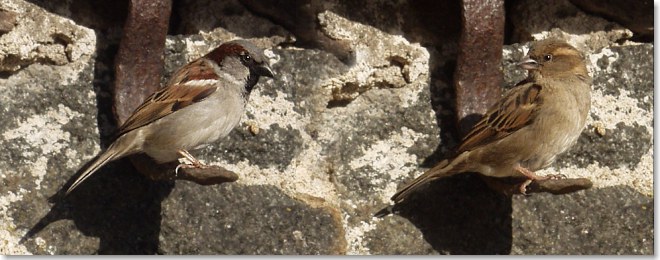
Bird surveys typically have many more observers than we can muster, and attempt to use a common methodology across the survey, such as dividing the region up into squares and allocating one observer to survey each square, and surveying all squares at the same time and date.
We can't do that. The area enclosed by the town ring road is 11km across by 7km. We are aggregating results on squares smaller than 1km, so we would need more than a hundred people to survey the sparrows simultaneously. However, we are aided by some key facts about the house sparrow:
- sparrows are extremely sedentary. They generally stay with the colony where they make the first breeding attempt
- They are noisy and though wary of close approach by man normally quite obvious
The sedentary nature helps us as we are not tallying observations at the same time. If we observe sparrows in an area on a particular day, it is reasonable to assume they are still in that square in the next few months.
The biggest difficulty is in establishing null results - how long does an observation have to last before we can say there are no sparrows? This is where negative reports are invaluable - a resident will know if they haven't seen sparrows for months, whereas it is difficult to arrive at a site and establish there are no sparrows. They might simply be elsewhere at the time. This issue means that we can't really record null results from an area we are unfamiliar, but we can record positive results from such areas. We will therefore be more likely to show sparrow-free areas as unsurveyed, until we get a report from a resident.
Please fill in the survey form (there's no form because the survey ended in 2006) telling us if sparrows visit and your postcode (or map reference or full address). If you do notice sparrows in other Ipswich areas than the one you live in please let me know (this will save us time/leg work as we attempt to fill in any blank areas of Ipswich).
2014 footnote - it's interesting to look at the methodology the BTO adopted for a house sparrow survey. They used 1km square sampling, though their aims were different (to characterise urban House sparrow populations across the UK rather than the specifics on one town), and got their volunteers to exhaustively search the public streets of that area, using chirping males and sightings.